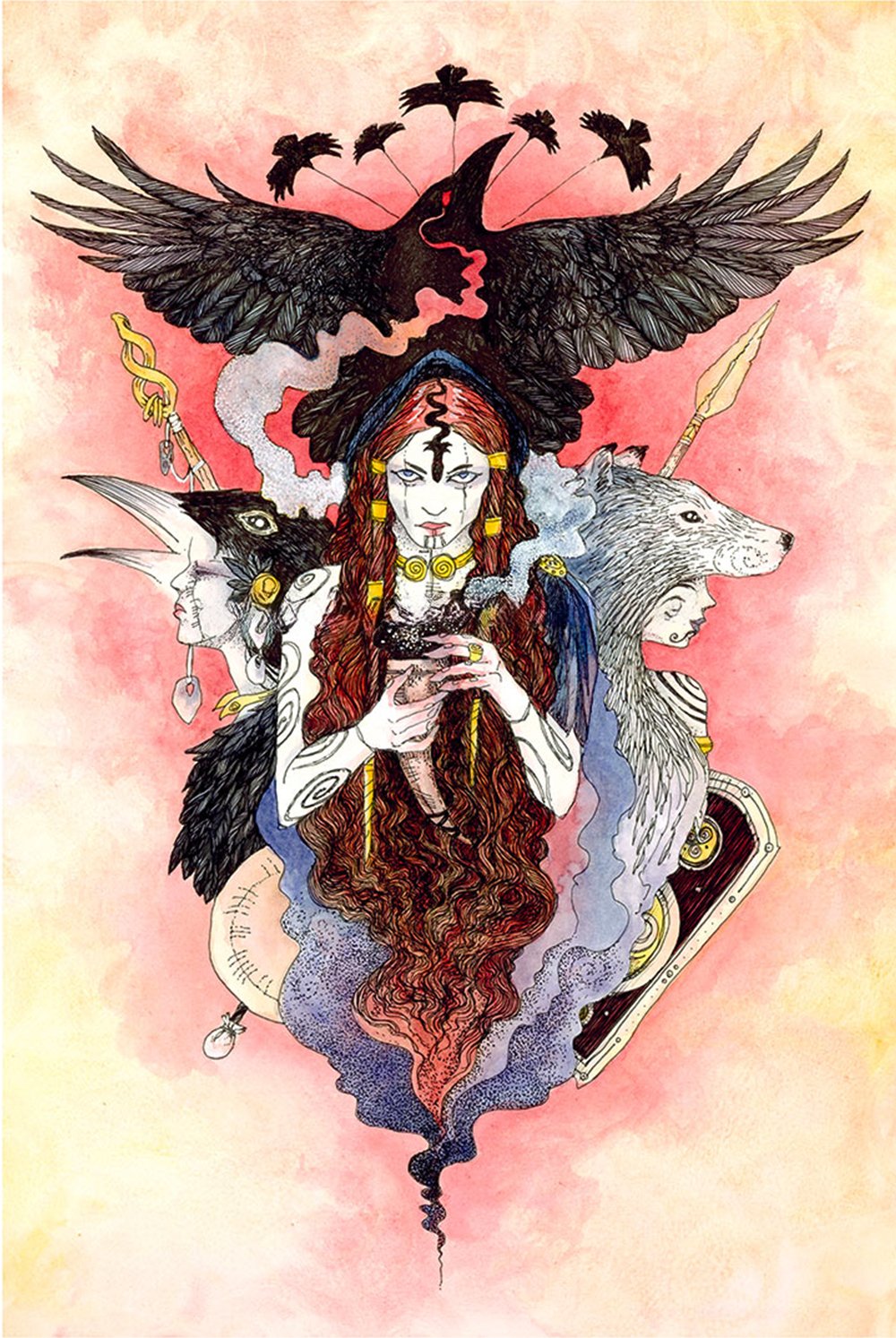The Morrigan — The Triple Mystery of a War Goddess
Explore the lore of the Irish phantom queen, a shape-shifting enigma of war and prophecy.
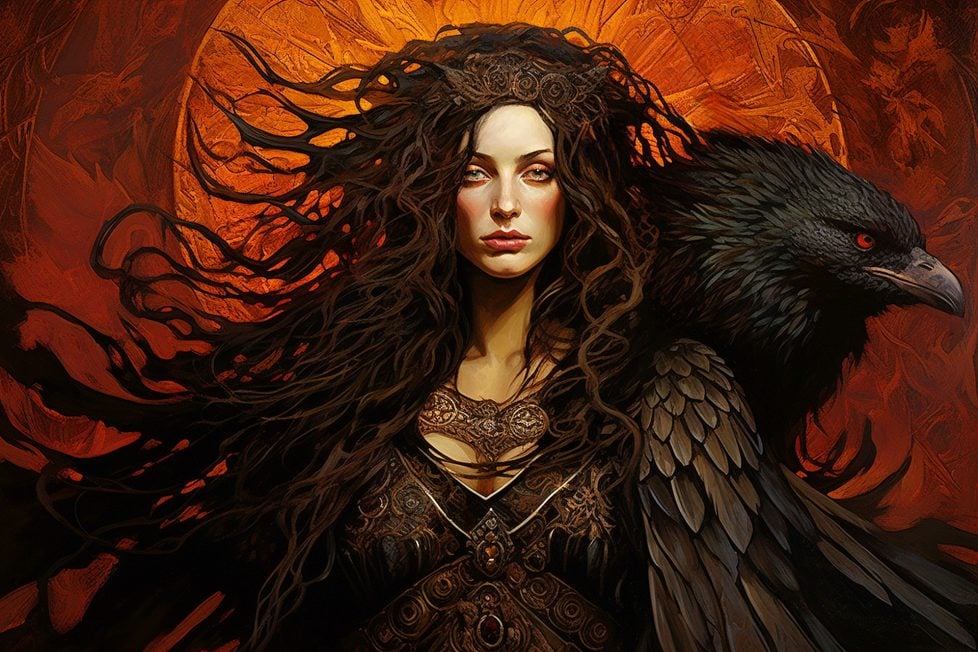
Explore the lore of the Irish phantom queen, a shape-shifting enigma of war and prophecy.

Table of Contents
ToggleOnce upon a time, in the rich lore of Irish mythology, there was a goddess. This goddess was known for her association with war. She had a knack for predicting victory or defeat, and influencing the course of battles. The Morrigan did not directly participate in physical combat. Like Athena, a Greek deity, she was more interested in the mental and psychological facets of war. Strategy, influence, fate, these were her domains.
Her name, in the modern Irish language, is Mór-Ríoghain, translating to “phantom queen”. A shape-shifter, she could take on many forms. A crow, a wolf, a bear, and a horse amongst many others. But of these, she is most often seen as a crow. She would appear on the battlefield as this intimidating black bird, stirring warriors into a frenzy.
In some tales, she was the wife of The Dagda, the chief god of the supernatural race of deities from Irish mythology, known as the Tuatha Dé Danann. And according to some, she was the inspiration for the character of Morgan in the tales of King Arthur.
Thus we begin the story of The Morrigan, an Irish war goddess, a shape-shifter, and a harbinger of fate and war’s outcomes.
The Morrigan, as we know her, is often seen as a collective entity, a trio of sisters. This triad, known as “the three Morrígna”, includes Badb, Macha, and Nemain. However in some sources, Anu (also known as Ana or Anann) replaces Nemain in the triad.
These three sisters are said to be the daughters of Ernmas, the Irish mother goddess. They appear in various texts, involved in battles, and interacting with legendary Irish mythic heroes like Cú Chulainn and Conaire Mór.
The identities of these sisters are not set in stone. Depending on the era or the cycle of Irish mythology, they could be separate entities. Other times, they are seen as different names for The Morrigan herself. This triple aspect of the goddess isn’t entirely consistent in Irish mythology.
Let’s delve deeper into the identities of each of these sisters, starting with Badb.
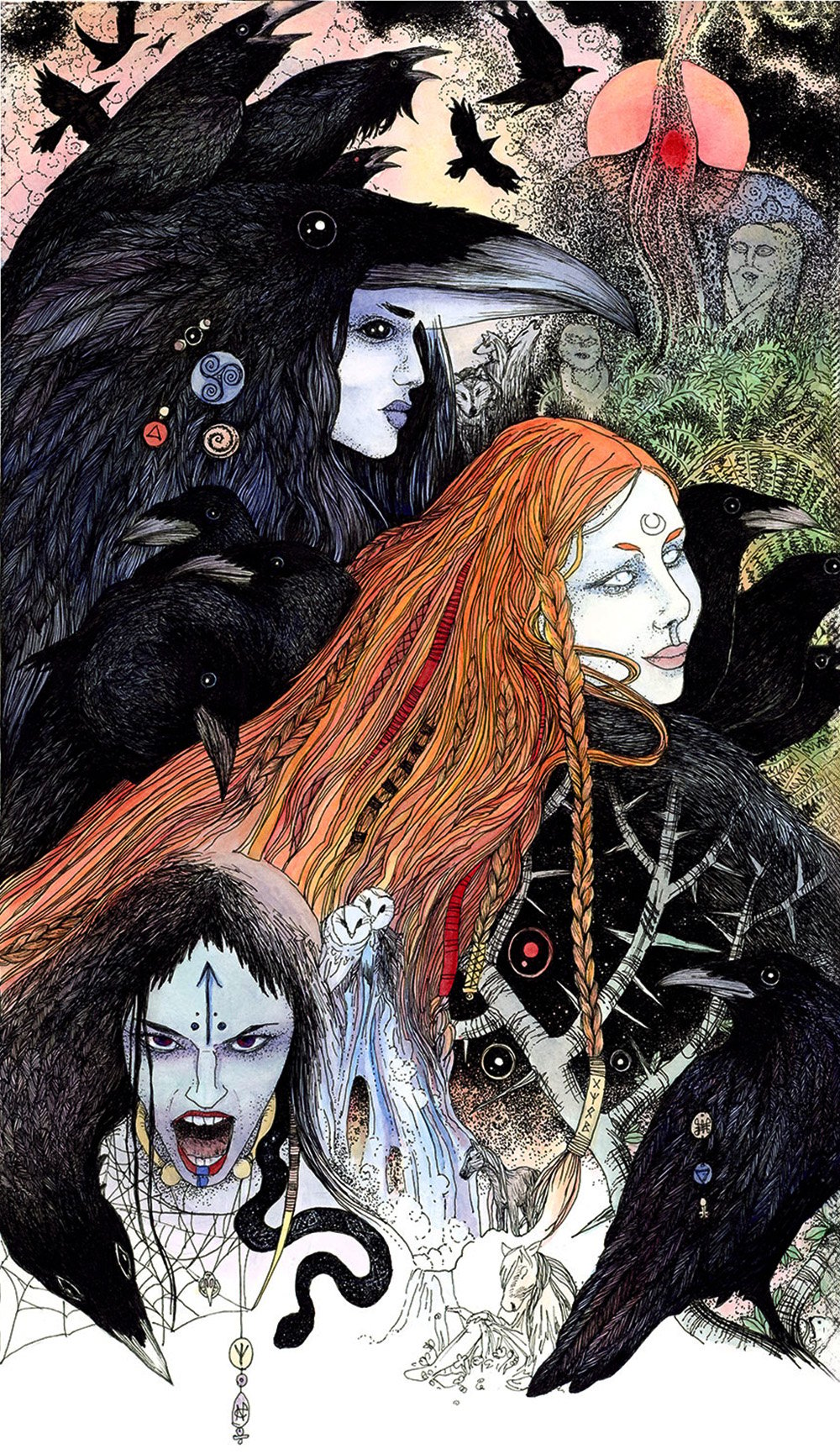
Badb is the first of the sisters. She is closely tied to the crow and the battlefield. In fact one of her names is Badb Catha which means “battle crow”. She is also seen as a witch goddess.
Badb is known for her distinct noise—a battle cry that sends a wave of terror through the souls of fighters. She shares many traits with the valkyries of Norse mythology, who also fly over battlefields as crows or ravens, choosing the slain warriors for Valhalla. Her association with war, as a female deity, isn’t unusual given that Celtic women often accompanied their husbands to war.
There are places named after her in Ireland. Ath na Báithe in County Limerick is where she was said to wash the clothes of those destined to die in battle. Another spot, An Bhean Chaointe in County Kerry, is where she lamented the death of her son Cú Chulainn.
Badb’s symbols are the crow, the sickle, and the cauldron. These items reflect her association with war, death, and magic, respectively.
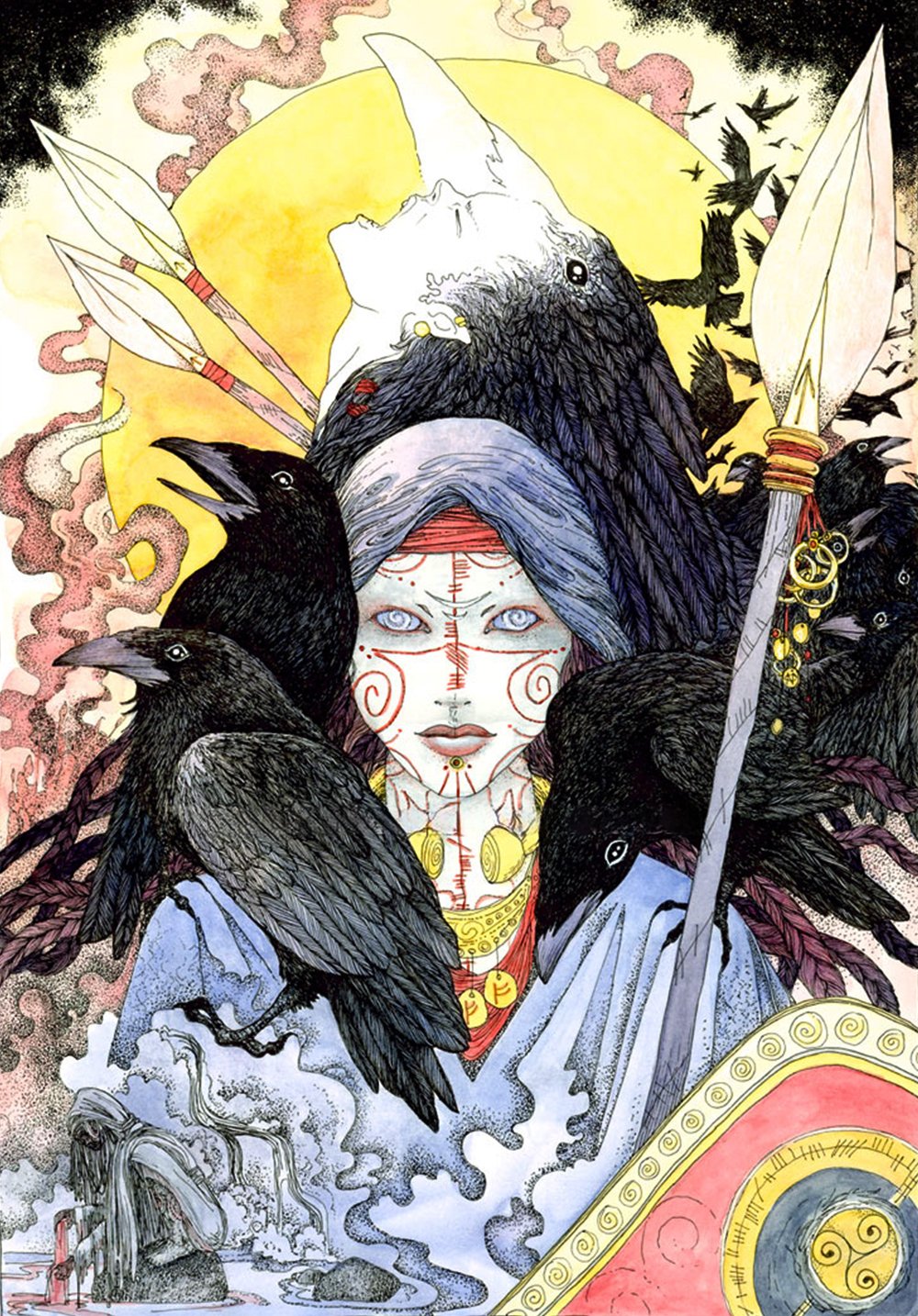
The second sister, Macha, is a figure of power and authority. Often identified as a Celtic horse goddess, she is also the goddess of sovereignty and the land. She stands as a guardian of fertility and a protector of sacred wells and springs.
In some myths, the king’s legitimacy is derived from his marriage to Macha. This suggests her importance in the societal structure and her association with power and success. In fact, evidence of women rulers in Celtic society dates back to 500 B.C., when a woman named ‘Macha of the Red Hair’ was called Queen of all Ireland.
Macha’s connection with death is evident in the Celtic practice of collecting the severed heads of slain enemies, which were referred to as ‘Macha’s Acorn Crop’. Tributes were paid to her annually at the Assembly of Macha, near the festival of Lughnasadh in August.
She is also known as a prophetess. One of her aspects, the Washer at the Ford, foretells the doom of those about to die. She does this by washing bloody clothes at a river ford and revealing to any inquirer that the clothes are theirs.
Macha’s symbols include red items, the acorn, the mare, and the severed head. Each of these symbols highlights different aspects of her persona – her fiery nature, her prophetic abilities, her association with horses, and her ties to war and death.
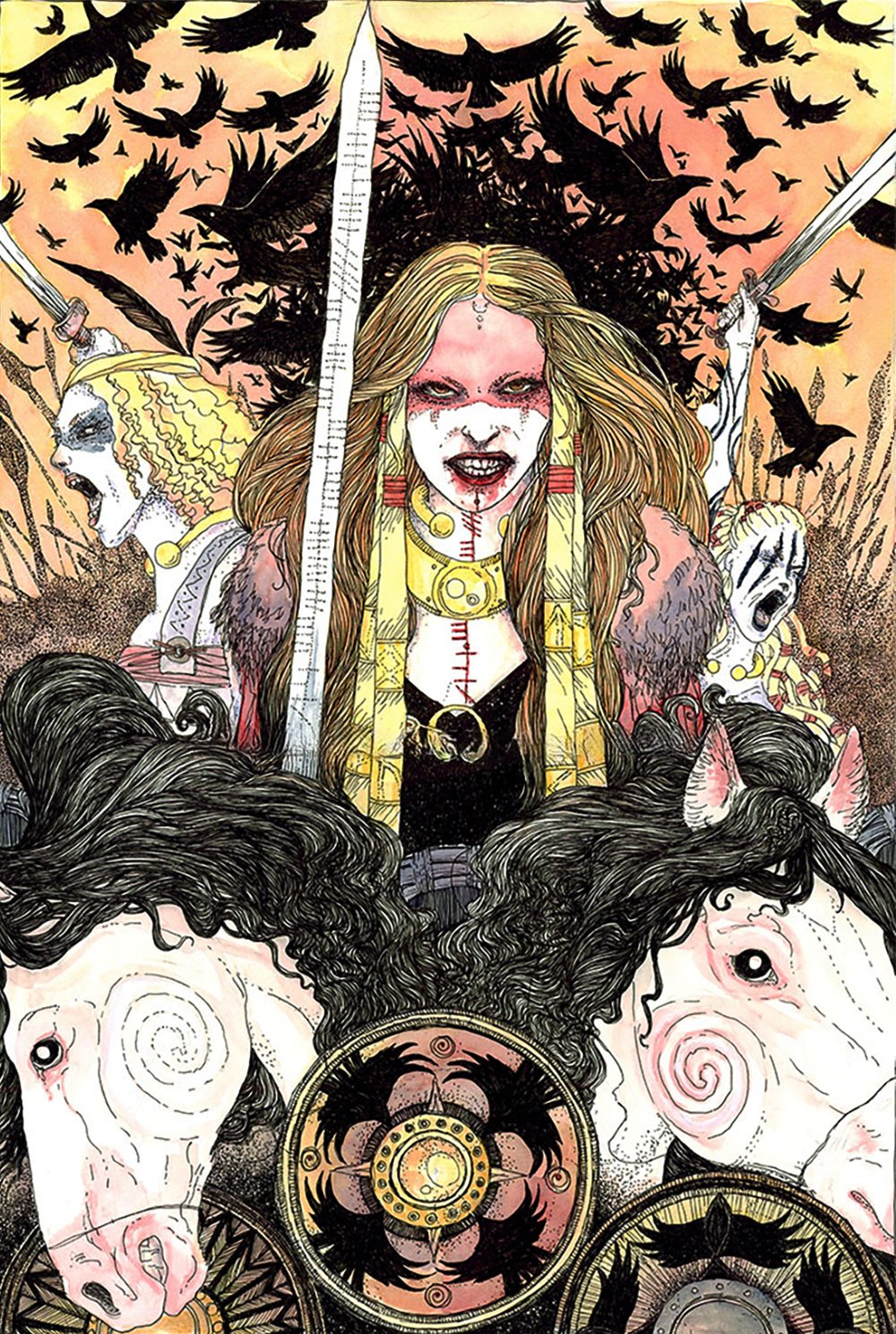
Nemain, the third sister, is a figure of terror on the battlefield. Her name translates to “frenzy” or “panic”, aptly describing her effect on soldiers. Instead of fighting, Nemain influences the outcome of battles through her intimidating presence and terrifying shrieks. Her shrieking battle cry is said to be so powerful that it can kill 100 men.
Nemain’s role goes beyond that of a traditional Banshee. She can also see the future and announce great victories through poetry.
In some tales, Nemain is the wife of Neit, the god of battle. This relationship strengthens her association with warfare and chaos.
Nemain’s symbols are poison, the shriek, and the sling-stone. These symbols point to her destructive nature and her ability to instigate chaos and panic. They underline her role as a harbinger of death and a prophetess of victory or defeat in war.
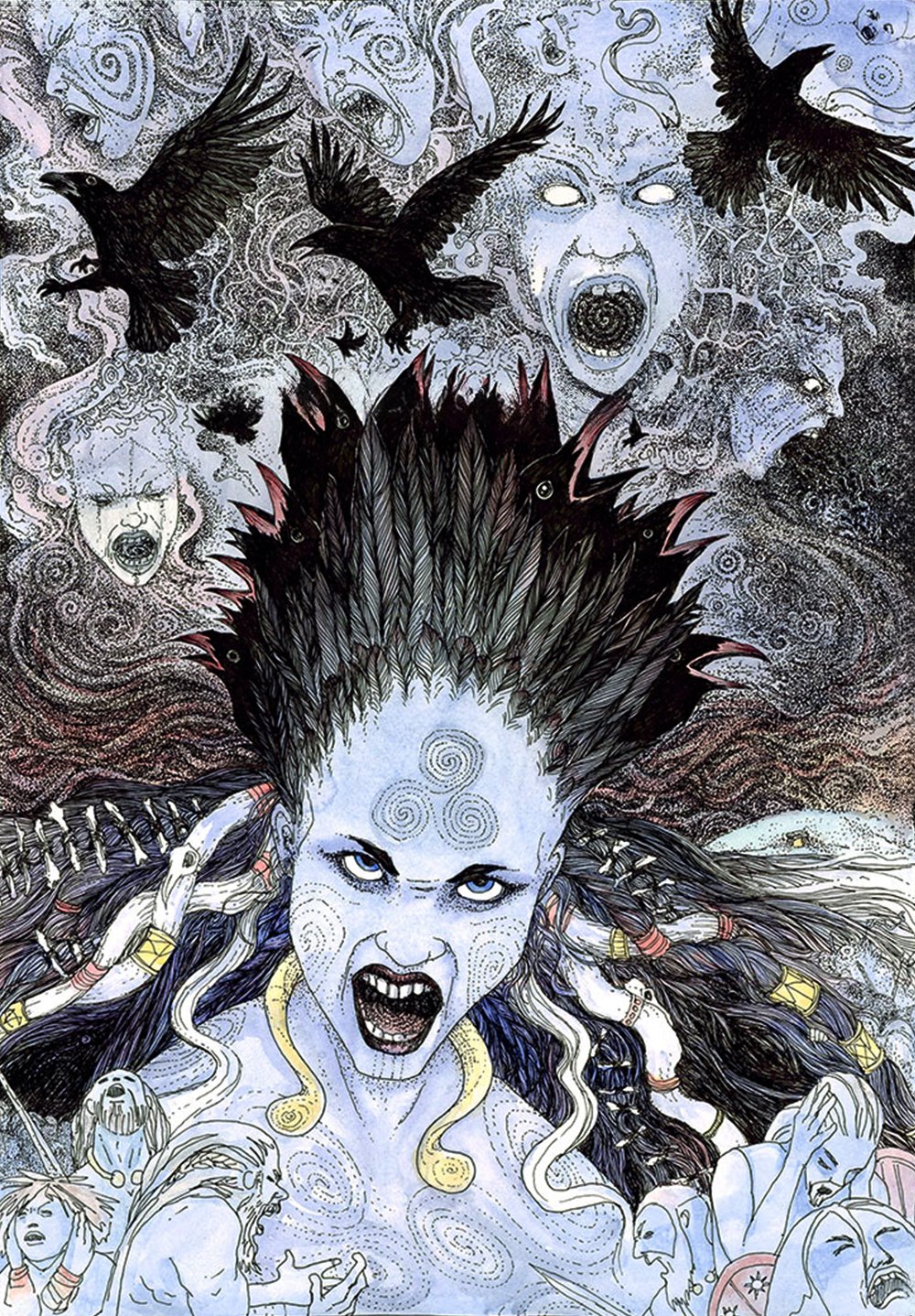
The Morrigan sisters play crucial roles in many tales from Irish mythology.
In the First Battle of Mag Tuired, they fought alongside the Tuatha Dé Danann against the Fir Bolg. Using their magic, they created a storm of fire and mist that terrified their enemies. They also foretold the victory of the Tuatha Dé Danann and the death of the Fir Bolg king, Eochaid.
In The Táin Bó Cúailnge, the sisters opposed Queen Medb and her army, who sought to steal the Brown Bull of Cooley from Ulster. The sisters supported Cú Chulainn, the hero who single-handedly defended Ulster.
In Togail Bruidne Dá Derga, the Morrigan prophesied the downfall of Conaire Mór, the High King of Ireland. Appearing as an ugly hag, she met Conaire on his way to a feast. She told him that he had broken his geasa (sacred taboos) and would die a violent death at the hands of his enemies. She also revealed that she was one of the daughters of Ernmas.
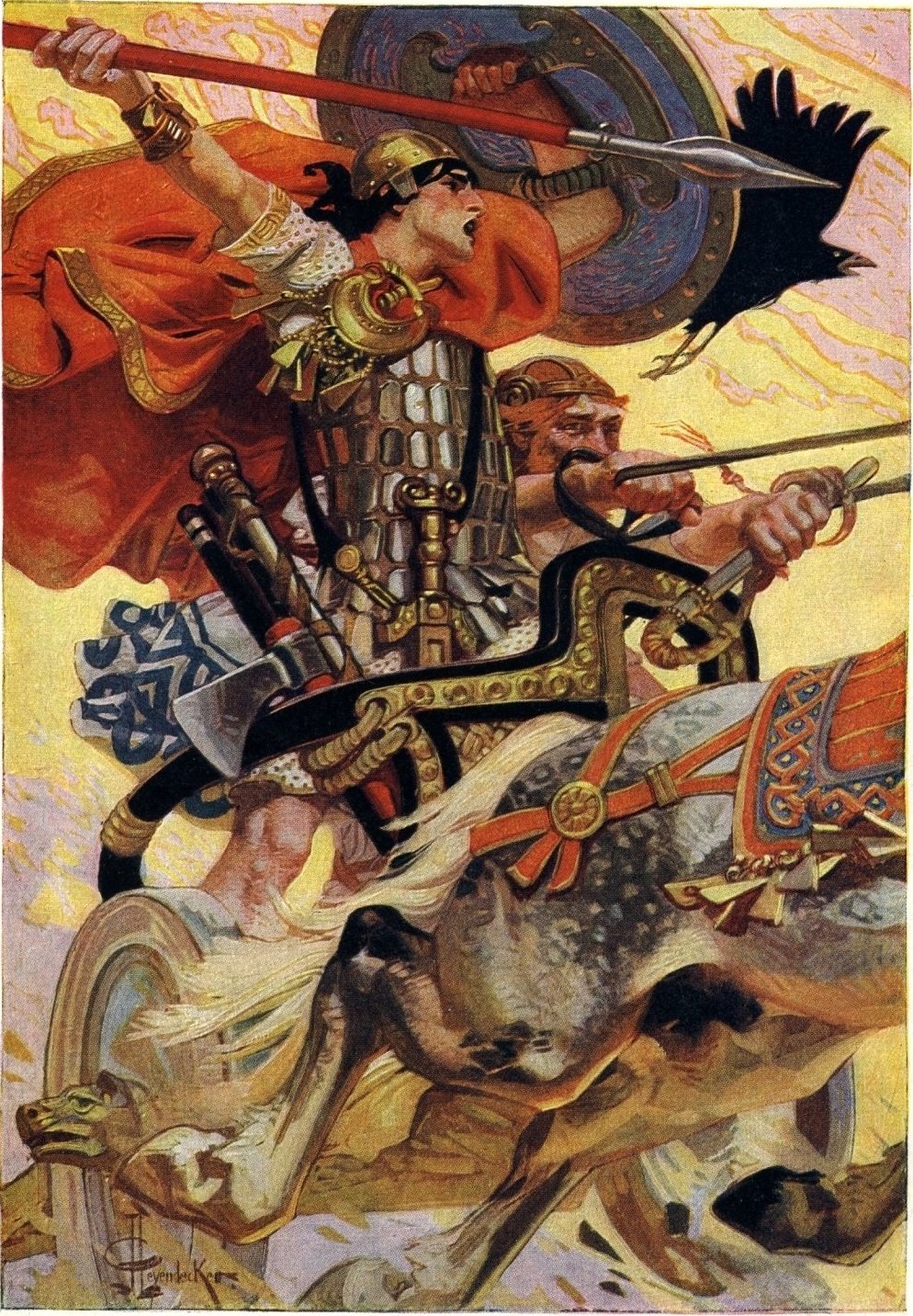
The Morrigan as a powerful and enigmatic goddess, continues to influence modern creative works. From music and movies to video games and comic books, her presence is widespread.
In music, songs like “Morrigan” by Children of Bodom, “The Morrigan’s Call” by Cruachan, and “Phantom Queen” by Thin Lizzy portray her as a powerful figure connected to war and death.
Movies and TV shows have also incorporated The Morrigan. In “The Crow”, she is the source of the protagonist’s resurrection and powers. In “Charmed”, she is one of the evil sisters who try to kill the Charmed Ones. “Lost Girl” portrays her as the leader of the Dark Fae who can manipulate people’s luck. “American Gods” features her as one of the Old Gods losing power in modern America.
Video games like “Dragon Age: Origins”, “Smite”, and “Hellblade: Senua’s Sacrifice” include The Morrigan as a character with unique abilities.
In books, Christopher Moore’s “Dirty Job” features The Morrigan as antagonists, while “The Wicked + The Divine” shows her as a god reincarnated every 90 years.
The Morrigan with her triple form and mysterious powers, is a source of inspiration to this day.
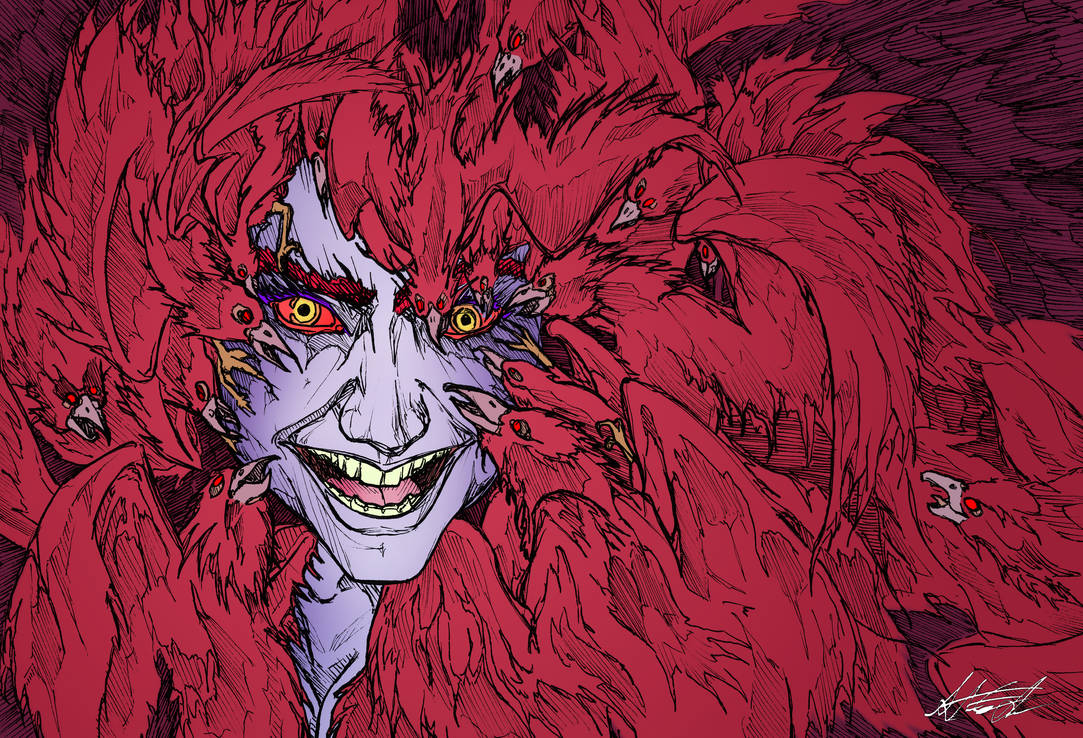
Irish mythology is a rich tapestry of tales and characters. But understanding it can be tricky. The Morrigan and her sisters are perfect examples of this complexity. Sometimes, they are different names for the same entity. At other times, they are separate beings.
Depending on the era and location, different versions of each character may exist. At one time or another, each of these sisters may have solely represented The Morrigan. Despite these variations, there is a substantial overlap among all these characters.
The Morrigan and her component entities embody three critical aspects of ancient Irish society: the warrior spirit, sovereignty, and fertility. Each sister represents a somewhat different facet, creating a comprehensive representation of these elements.
Learning about the myth of The Morrigan is akin to understanding the multifaceted nature and primary concerns of the ancient Irish Celts.
